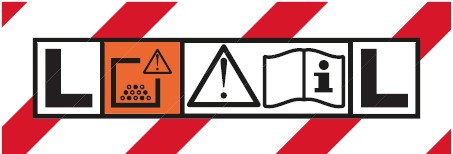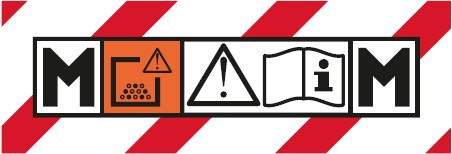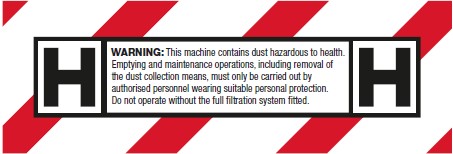Local exhaust ventilation (LEV)
LEV is an engineering control that reduces worker exposure to airborne contaminants (dust, mist, fume, vapour, gas) in the workplace by capturing the emission at source and transporting it to a safe emission point or to a filter/scrubber.
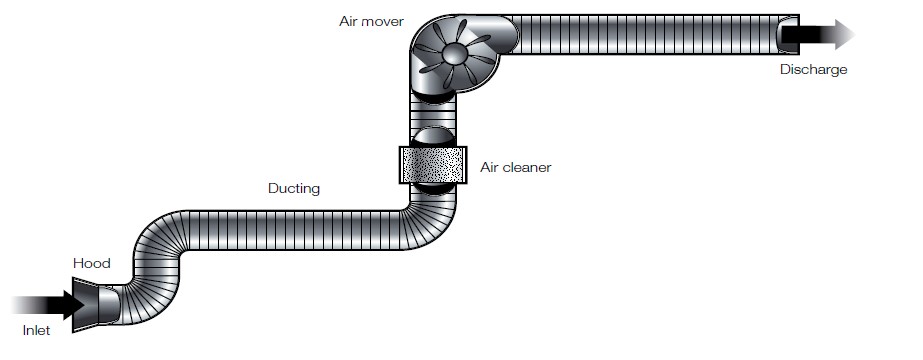
Figure 1 example of a basic LEV system (courtesy HSE)
LEV usually consists of:
- a hood or opening where the contaminants enter the system.
- ducting, which safely transports the contaminants to a filter/cleaner/exhaust point.
- an air cleaner/filter/scrubber, used to capture airborne contaminants.
- an air mover, usually a fan to power the system.
- a discharge point, where the air is safely exhausted.
When designed, installed and maintained properly, LEV can provide long term worker protection.
Use LEV to:
- capture contaminants at the source and remove them from the work area. This is particularly important with very toxic substances
- handle many types of contaminants including dusts and metal fumes
- reduce the amount of makeup air as small amounts of air are being exhausted
- lower energy costs as there is less makeup air to heat or cool in indoor workplaces.
When using LEV be sure to:
- regularly clean, inspect and maintain the system so it doesn't deteriorate over time, especially filters
- carry out regular and routine testing to identify problems early and implement corrective measures
- have any modifications carried out by a competent person to make sure the system continues to work effectively.
The effectiveness of LEV will vary depending on the nature of the work, work environment and products or materials used as well as the level of airborne contaminant you need to capture. Persons conducting businesses or undertakings (PCBU) need to work with designers, suppliers, installers and workers to ensure the LEV will effectively control exposure.
Note: Unless air monitoring indicates exposure levels are well below the relevant exposure standard/s, suitable fit-tested respiratory protective equipment (RPE) should always be used in combination with LEV to protect workers.
The figure below provides a general indication of the effectiveness of different types of LEV used to control airborne contaminants.
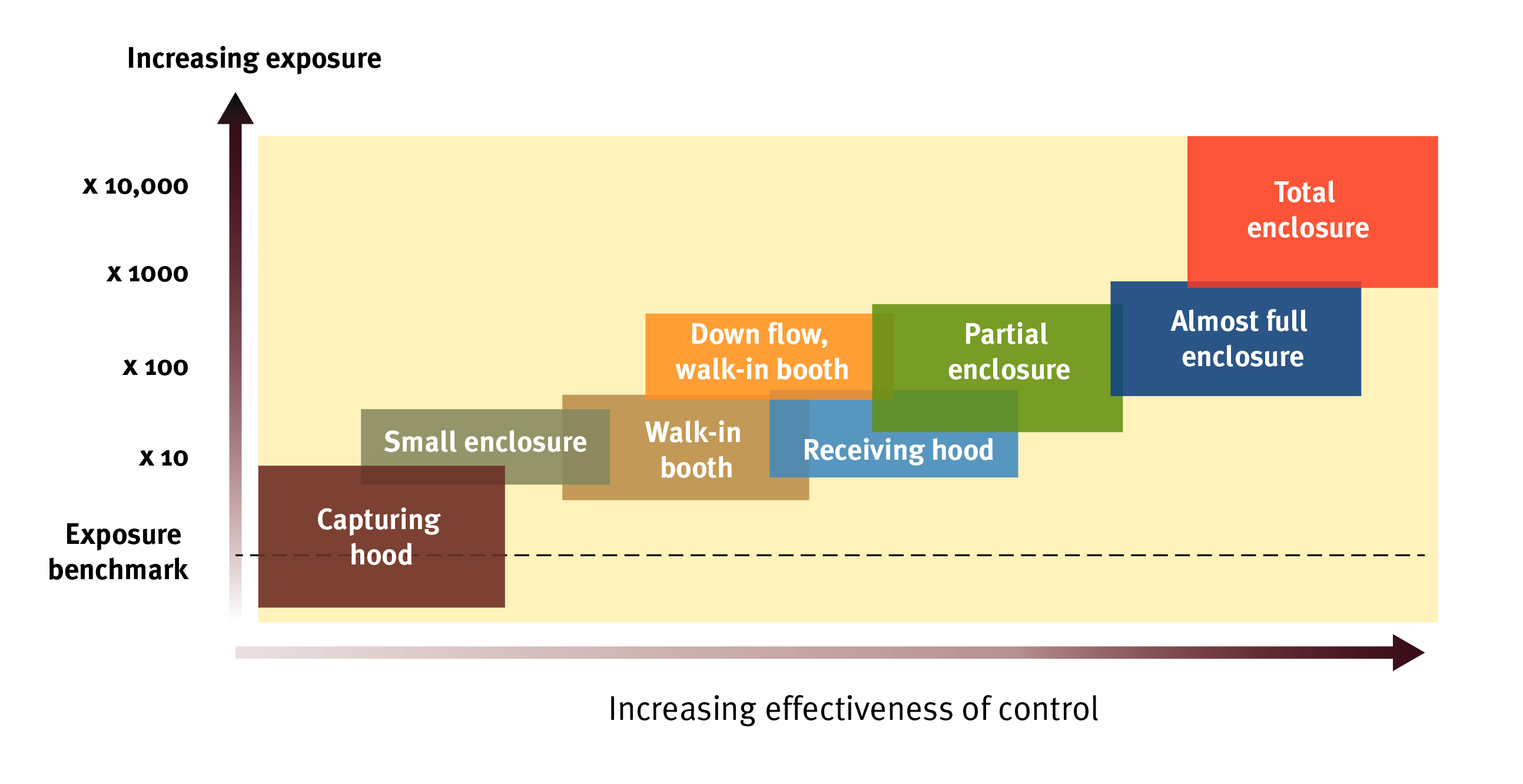
Figure 2 Some indicative ranges for the effectiveness of various types of LEV (Courtesy HSE)
Examples and basic requirements of particular LEV
Fume cupboards
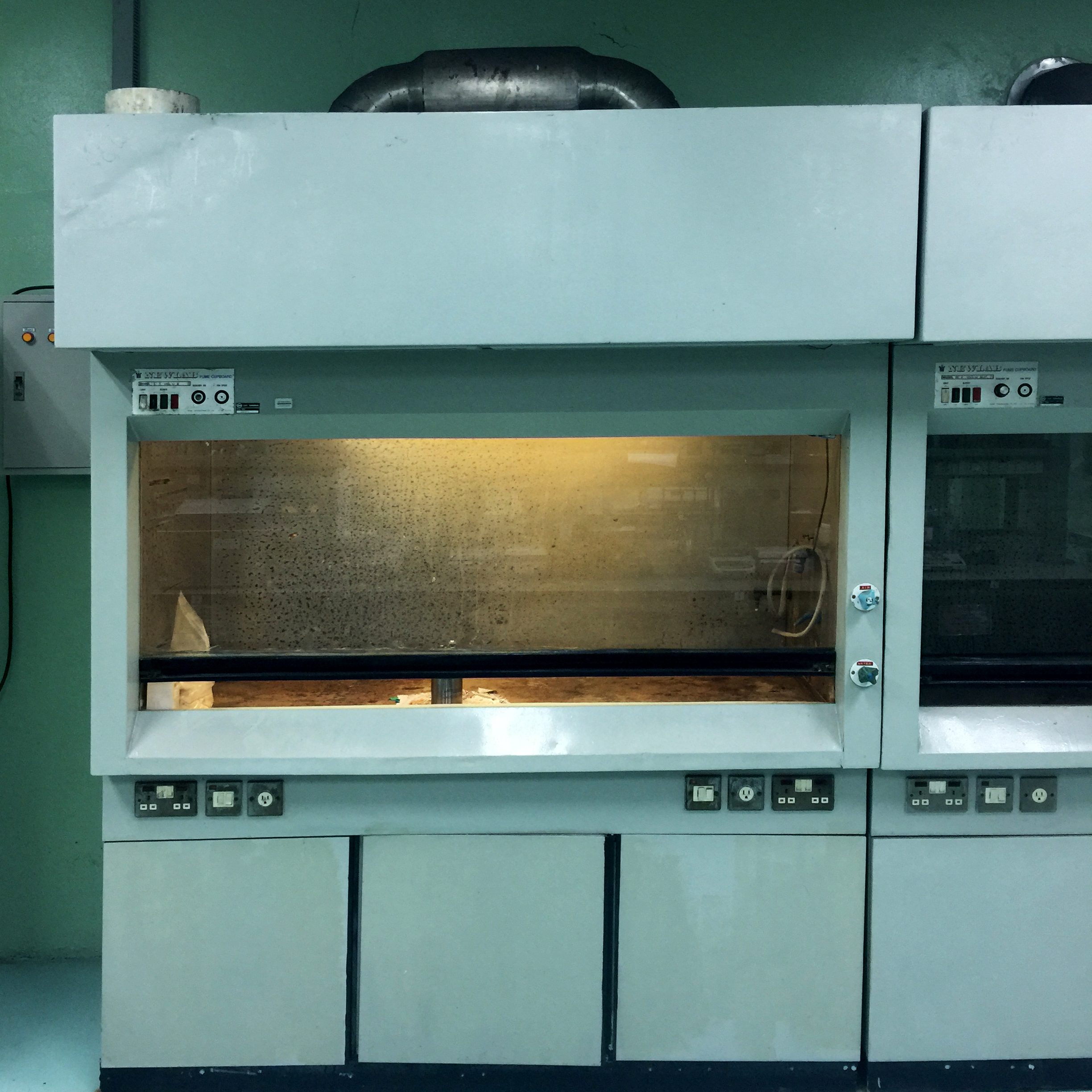
Fume cupboards need to:
- be designed and built to comply with AS/NZS 2243.8:2014 Safety in Laboratories – fume cupboards
- have an average face velocity of 0.5 metres per second (m/s) with individual measurements of at least 0.3 m/s
- be tested at least annually in accordance with AS/NZS 2243.8.
Spray booths
Spray booths need to:
- be designed and built to comply with AS/NZS 4114.1:2003 – Spray painting booths, designated spray painting areas and paint mixing rooms – Design, construction and testing
- have effective exhaust capture and filtration systems and must be able to maintain an average air flow rate (measured when the booth is empty) of at least:
- 0.3 m/s for full down draught booths
- 0.4 m/s for electrostatic spray painting booths
- 0.5 m/s for any other booth.
- be regularly checked and maintained in accordance with AS/NZS4114.1.
For more information, visit the spray painting webpage and refer to the Spray painting and powder coating Code of Practice 2021 (PDF, 1.18 MB).
On-tool extraction and industrial vacuum cleaners
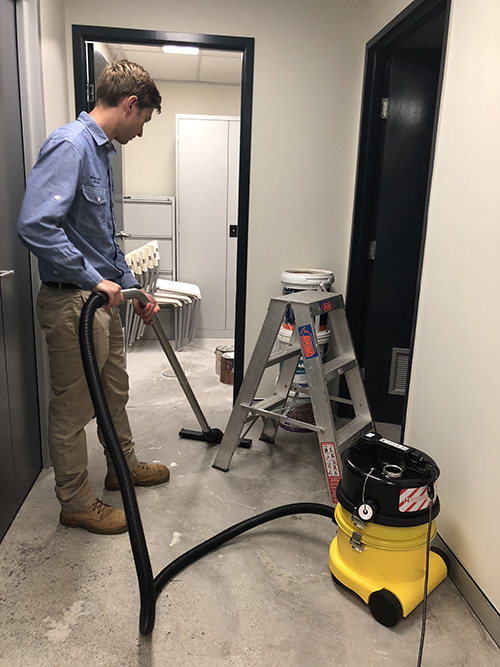
In order to safely capture and contain dusts, use the right kind of industrial vacuum cleaner. It isn't enough to just use any vacuum cleaner fitted with a high efficiency particulate air (HEPA) filter. The more hazardous the dust, the more important it is to contain it.
The vacuum cleaner must have sufficient power and capacity for the task. Features including on-demand start and automatic filter knocking are desirable. Incorporating an inline dust collector (cyclone) between the on-tool capture hood and the vacuum can assist with maintaining consistent suction by reducing the build-up of dusts in the filter.
The table below provides some basic information on the suitability of different classes of vacuum cleaner for particular contaminants.
Table 2 Classes and suitability of industrial vacuum cleaners
| Dust class | Required for |
|---|---|
L (light hazard)
| Dusts with a workplace exposure standard greater than 1 mg/m3 (8 hour TWA*) (excluding wood dusts). Examples include:
|
M (medium hazard)
| Dusts with a workplace exposure standard greater than or equal to 0.1 mg/m3 (8 hour TWA*) and all wood dusts. Examples include:
|
H (high hazard)
| Dusts with a workplace exposure standard less than 0.1 mg/m3 (8 hour TWA*), carcinogenic dusts, pathogenic dusts. Examples include:
|
*8 hour time-weighted average (TWA) is the maximum average airborne concentration of a substance when calculated over an eight hour working day, for a five day working week. The Hazardous Chemicals Information System (HCIS) provides more information on workplace exposure standards.
Regular inspection, testing and maintenance of LEV systems is critical.
Both scheduled maintenance and regular pre-start inspections need to include the following elements:
- moving parts (e.g. fan bearings, belt drives)
- non-moving parts that may wear or be damaged (e.g. ducts, hoods)
- routine replacement of filters and/or collection bags
- cleanliness of ductwork and other components
- flow rates/capture velocities*.
* Ensuring your LEV has adequate and reliable flow rates is essential. This is usually done with an anemometer, dust lamp or smoke tracer. Another simple way is to use an airflow indicator (such as a manometer). This gives workers an easy way to tell if the LEV is working properly. The table below gives typical flow rates or capture velocities required to properly capture varying types of airborne contaminants:

Table 1 Typical capture velocities
Air monitoring will determine if the LEV is working properly (i.e. capturing as much contaminant as possible). This should be done by a competent person such as an occupational hygienist.
Related links
- Abrasive blasting Code of Practice 2021 (PDF, 1.13 MB)
- Respiratory protective equipment
- ACGIH (2016). Industrial Ventilation: A manual of recommended practice for design, 29th edition. Available for purchase from www.acgih.org
- AS/NZS 2243.8:2014 Safety in laboratories – Fume cupboards
- AS/NZS 4114.1:2003 Spray painting booths, designated spray painting areas and paint mixing rooms – Design, construction and testing
- Health and Safety Executive (2011) - Clearing the air
- Local exhaust ventilation – Preventative maintenance (Worksafe Victoria)
- Local Exhaust Ventilation (LEV) workplace fume and dust extraction (HSE)
- Local exhaust ventilation (Safework SA)
- Spray painting and powder coating Code of Practice 2021 (PDF, 1.18 MB)
- Welding processes Code of Practice 2021 (PDF, 0.95 MB)
